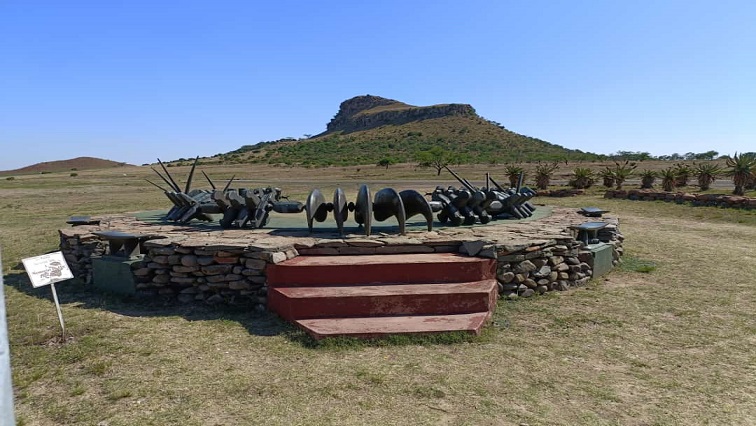Despite plans announced in 2014 to develop a museum precinct at Isandlwana, the site of the famous victory of AmaZulu regiments over the British in 1879, the area has not lived up to its tourism potential.
The R10 million that was made available was only enough to do a feasibility study and environmental impact assessment.
The Isandlwana area is home to almost 20 000 people, according to Advocate Simphiwe Xaba, a senior member of the Amangwe Traditional Council. The area is seven kilometers away from the rural town of Nquthu in northern KwaZulu-Natal.
The levels of unemployment and poverty are high. Despite it being one of the famous battlefields in the province, the road to Isandlwana is still not tarred.
Despite government plans announced in 2014 to develop a heritage precinct at the battlefield, little progress has been made.
The donation of R10 million by the National Lotteries Commission and the Umzinyathi District Municipality was not enough to establish such a precinct. The small museum in a stone building erected by the British a few years after the Anglo-Zulu War houses displays, and piles of white-washed stones marking the graves of soldiers. Yet the museum only employs two local youths. Unfinished foundations of rondavels and a pile of sand is testimony to the plans that have not materialised.
Sulekile Ndebele’s mud home is built near the site where the commander of the Zulu warriors, Ntshingwayo KaMahole was standing during the battle. Yet, Ndebele cooks meals in a three-legged pot over a fire made of cow dung.
“I can say there is no progress in the area, and our children have qualifications but they don’t get permanent jobs. There is no tangible development and we wish to have development in the area, but the situation is beyond our control.”
Bonisiwe Zulu from the KwaNyezi area sells fruit to earn a bit of money for her family. She says they don’t benefit from annual events like the commemoration of the Battle of Isandlwana.
“We don’t see any changes in the area. There are no job opportunities in the area. This area shouldn’t be like this as it is one of the areas that is well known across the country and world. Our children should get employment if the area is developed and taken care of.”
Advocate Xaba says the building of the museum is still in the pipeline.
“The delay has been remarkable and it’s true it’s not good for the community. Now, we are confident that as stakeholders have come together hopefully, something which is tangible will come through because we have now a project steering committee composed of all stakeholders led by Umzinyathi municipality. There is also a technical team which is led by the Department of Arts and Culture nationally, which is supporting the process.”
Images taken by SABC TV reporter Vusi Khumalo:
Xaba says tourism has the potential to unlock a craft industry in the area.
“There are so many job opportunities lying here and arts and crafts for me should be the major thing when people come around and we should develop our local tour guide. That will be another economic spin-off in the area. When you come here, you cannot even buy any traditional attire around this area.”
Thulani Khuzwayo who has been a tour guide for more than ten years says the area should be rolling out the red carpet for tourists.
“With the volume of visitors that are coming, and it tells you that the number of visitors is increasing. Once in a month, we had about 10 thousand visitors during the British when they came for rugby. So, we need to start now to be modernised at the same time and also think about the people as they put in the money. And we should roll up the red carpet for them because it’s them who spend money on this particular business. At the same time, if there is an idea of putting a structure in the museum, I think it’s gonna be good as it serves the purpose of nation building.”
It is hoped that the completion of a museum at the battlefield will help efforts to return artifacts that are currently in Welsh Regiment Museums.
Meanwhile, the provincial Department of Arts and Culture refused to comment on the stalled development programme.
The Battle of iSandlwana Commemoration, Nquthu


